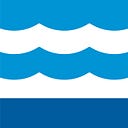Downpour causes combined sewer overflow at Edgewater Beach
Sewer District issues advisory after storm discharged combined sewage into Lake Erie
The Northeast Ohio Regional Sewer District will post a public advisory at Edgewater Beach due to a combined sewer overflow (CSO) event July 20.
The last Edgewater overflow occurred on August 29 under similar conditions, resulting from a large storm that exceeded the capacity of the sewer system, discharging a combination of sewage and stormwater into Lake Erie.
Water quality at the beach
Visitors — particularly children, the elderly, and those in ill health — are advised to avoid contact with the water and wood debris for the next 48–72 hours.
Sewer District crews will sample water twice daily (once in the morning and once in the afternoon) at 10 locations at Edgewater Beach. Five locations are close to the beach, and the other five are further from the shore but still in proximity. The samples will be tested to determine if E. coli bacteria levels are elevated. Results will be available 24 hours after the sample is collected. Once the samples are below the federal and state advisory standards of 235 (which equates to colony counts of E. coli per 100 milliliters of water), the advisory will be lifted, and the Sewer District will discontinue the twice-daily sampling.
Improvements to the Edgewater Sewer System
Built in the late 1880s, the combined sewer outfall at Edgewater discharged a mixture of sewage and stormwater into Lake Erie approximately 40 to 50 times per year through the mid-1970s.
Since its inception in 1972, the Sewer District has invested billions in sewer and stormwater projects across the entire service area. Early work included improving and building new infrastructure, such as the Northwest Interceptor, which resulted in combined sewer overflow discharges significantly decreasing. Tonight’s overflow event is the first in 2023.
The Edgewater portion of the Northwest Interceptor begins at W. 117 and ends at the Westerly Wastewater Treatment Plant located by the Edgewater Marina, collecting sewage from homes and businesses on the west side of Cleveland to Kamm’s Corner. As part of its recent improvement projects, the Sewer District removed three inflatable dams in the interceptor and provided improved ventilation, reducing pressure within the sewer pipe. Additionally, the Sewer District sealed an access cover near the beach and raised the overflow gate control elevation, allowing more combined sewage to be directed to the Westerly Wastewater Treatment Plant. These improvements raise the level of control at the Edgewater combined sewer outfall.
The past and future of the Edgewater Beach outfall
In addition to upgrades, the Sewer District researched opportunities to eliminate the Edgewater outfall from the beach.
“The Edgewater overflow serves as a last-resort release point during heavy rains, protecting homes and the Westerly Wastewater Treatment Plant from flooding; as a result, we knew it wasn’t practical to remove it,” said Kyle Dreyfuss-Wells, Sewer District CEO. “However, we explored options, including relocating the outfall approximately 2,000 feet into Lake Erie. This option does nothing for water quality, while costing customers more than $30 million to build. Since this would render no water quality benefit, we determined it would not be a wise investment of our customers’ dollars.”
Eliminating Other Combined Sewer Overflows in the Region
One of the Sewer District’s largest capital expenditures is Project Clean Lake, a $3 billion, 25-year infrastructure investment program to address combined sewer overflows. Existing in nearly 800 cities — including Cleveland, Columbus, Akron, and Cincinnati — combined sewers were once a state-of-the-art waste management system. Now, they must be addressed to reduce the volume of pollution entering waterways. In the Sewer District’s service area, CSO discharge points are in Cleveland and inner-ring suburbs, including Garfield Heights, Maple Heights, Brooklyn, and East Cleveland.
Since the start of Project Clean Lake in 2011, the Sewer District’s goal is to reduce combined sewer overflows from 4.5 billion gallons to under 500 million gallons annually by 2036. To date, the Sewer District has eliminated about 1.7 billion gallons of combined sewer overflow and anticipates the elimination of an additional 300 million gallons by 2023 when the Westerly Storage Tunnel is activated. Further, because of Project Clean Lake and other capital investments, the Sewer District has successfully reduced combined sewer overflow discharge points from 126 to 112.
Project Clean Lake includes, in part, the construction of 7 large-scale storage tunnels large enough for a semi-truck to drive over 20 miles: Euclid Creek ($213M), Dugway ($155M), Doan Valley ($155M), Westerly ($146M), Shoreline ($223M), Southerly ($358M) and Big Creek ($239M). Euclid Creek, Doan Valley and Dugway are currently active, capturing combined sewage that is treated at the Easterly Wastewater Treatment Plant. Westerly and Shoreline are under construction, and Southerly will be in construction in 2024.
